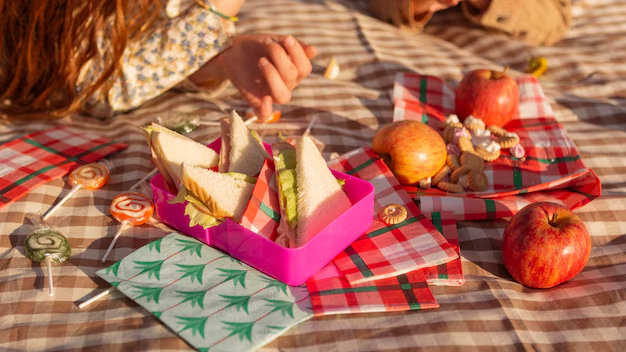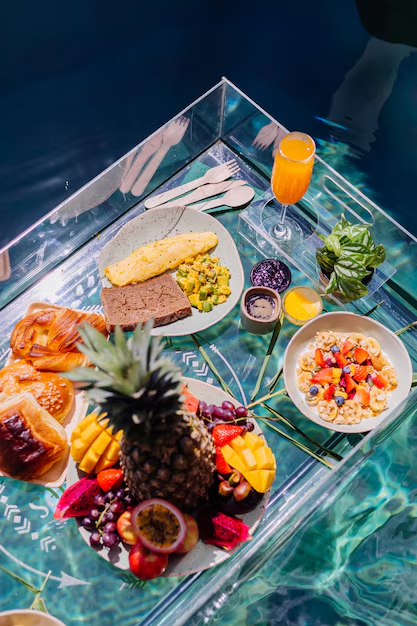Spending time outside with loved ones is a wonderful way to preserve the beauty of nature and make memories. However, conventional picnics often produce needless garbage that is bad for the environment. You may have a picnic and leave as little of an environmental impact as possible by using eco-friendly products. We’ll look at picnick for 5 ecofriendly material that will make your picnic both fashionable and sustainable below.
Why Choose Eco-Friendly Materials for Picnics?
Sustainable practices, waste reduction, and environmental preservation for future generations are all aided by eco-friendly materials. Selecting them shows careful preparation. Every option matters, whether it’s biodegradable plates, organic cotton blankets, or reusable cutlery. In addition to being environmentally friendly, these materials provide your picnic a special touch.
1. Reusable Bamboo Cutlery
Bamboo cutlery is lightweight, durable, and biodegradable, making it perfect for eco-conscious picnic enthusiasts. Unlike single-use plastic utensils, bamboo cutlery is reusable, easy to clean, and stylish. It is also naturally antibacterial, ensuring safe dining experiences outdoors. Pack bamboo forks, knives, and spoons to reduce your waste and maintain a clean conscience.
- Bamboo is a renewable resource and grows quickly without harming the environment.
- Lightweight yet sturdy, it withstands wear and tear, lasting through multiple picnics.
- Available in travel-friendly kits, bamboo cutlery makes packing for picnics a breeze.
2. Biodegradable Plates and Bowls
Disposable plates and bowls often end up in landfills, contributing to long-term waste problems. Biodegradable alternatives, made from materials like sugarcane fiber or palm leaves, break down naturally. These plates are as sturdy as plastic but decompose without harming the environment. Use them confidently, knowing they are eco-conscious and compostable.
- Made from natural materials like bagasse, these plates offer durability and elegance.
- Suitable for holding heavy foods and liquids without leaking or breaking.
- Compostable products decompose within months, returning nutrients to the soil.
3. Organic Cotton Picnic Blanket
A picnic blanket is essential for comfort, but synthetic ones harm the environment during production and disposal. Organic cotton blankets are a sustainable alternative that offers softness, breathability, and aesthetic appeal. These blankets are free of harmful chemicals, ensuring comfort for you and your family.
- Organic cotton is grown without pesticides, making it safe for sensitive skin.
- The material is durable, reusable, and machine washable for long-term use.
- Stylish patterns and colors elevate the look of your picnic setup effortlessly.
4. Reusable Glass or Stainless-Steel Containers
Single-use plastic containers are not only wasteful but also pose health risks when exposed to heat. Reusable glass or stainless-steel containers provide a sustainable solution for packing food securely. These containers are durable, leak-proof, and keep food fresh throughout your picnic.
- Glass containers are ideal for cold salads, sandwiches, and beverages.
- Stainless-steel options keep food warm and are resistant to dents or scratches.
- Both materials are dishwasher-safe, making cleanup convenient after your picnic.
5. Reusable Cloth Napkins
Cloth napkins are a simple yet impactful swap from disposable paper ones, reducing paper waste significantly. Choose napkins made from organic or recycled materials for added sustainability. These napkins are soft, stylish, and can be washed and reused multiple times, saving both money and resources.
- Recycled fabric napkins often come in vibrant colors, adding charm to your picnic table.
- They are highly absorbent, suitable for cleaning spills or wiping hands.
- Easily portable and lightweight, they enhance the overall picnic experience.
Tips for a Sustainable Picnic
Sustainability extends beyond materials to include thoughtful planning and mindful behavior during your outing. Here are some quick tips:
- Pack Trash Bags: Bring reusable trash bags to collect and separate waste for proper disposal.
- Avoid Single-Use Items: Stick to reusable or biodegradable alternatives for plates, cups, and utensils.
- Choose a Local Spot: Reduce your carbon footprint by picking a picnic location close to home.
- Leave No Trace: Ensure the area is as clean as you found it by removing all waste and debris.
How to Make an Impactful Eco-Friendly Statement
Your picnic may encourage people to embrace sustainable practices by using eco-friendly goods. To inspire friends and followers to follow suit, post a picture of your setup on social media. Emphasize the aesthetic appeal of natural materials as well as their environmental advantages. When it comes to preserving the environment, every little action counts.
Conclusion
Convenience and elegance don’t have to be sacrificed while organizing an environmentally picnick for 5 ecofriendly material. Glass containers, cloth napkins, organic cotton blankets, biodegradable plates, and reusable bamboo utensils make your excursion sustainable and pleasurable. Even little adjustments to your picnic routine may have a big beneficial environmental effect. Embrace nature responsibly and make your next picnic eco-friendly so that only memories are left behind.










